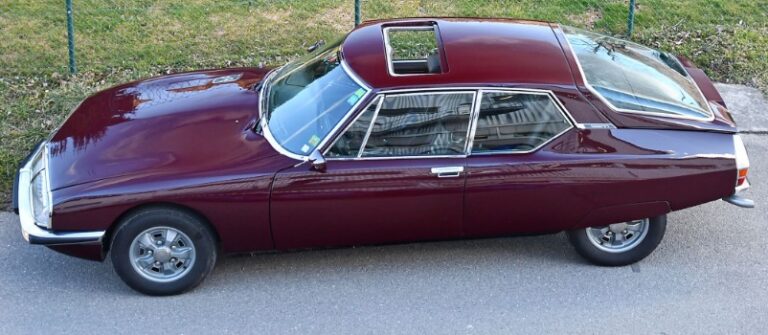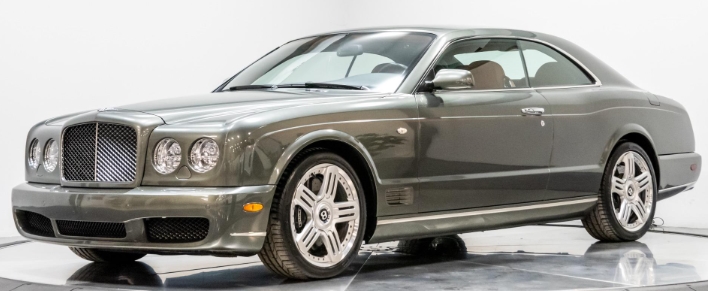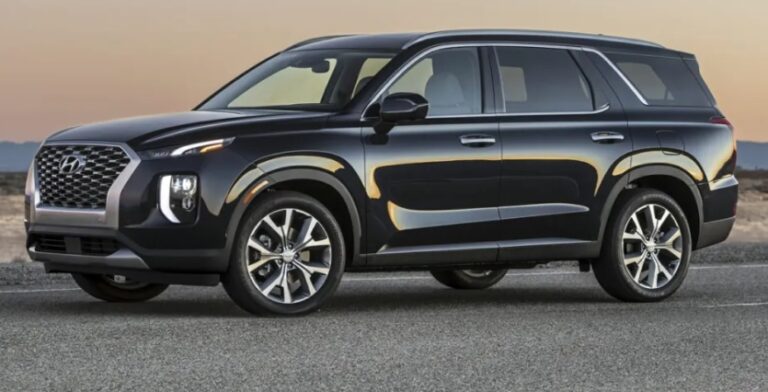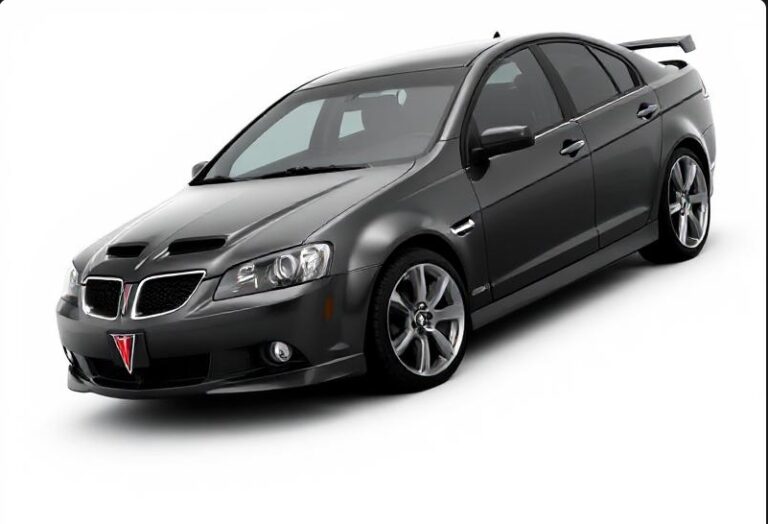The Electric Successor: Charting the Evolution of the Volkswagen ID.7
In the grand narrative of Volkswagen, certain nameplates stand as monuments to their eras: the Beetle, the Golf, the Passat. Each defined a segment and carried the brand’s reputation for quality, practicality, and accessibility for decades. As the automotive world pivots toward an electric future, the question of succession becomes paramount. For Volkswagen, the answer in the executive and family car segment is the ID.7—a vehicle whose evolution is not measured in decades of model-year changes, but in a rapid and deliberate journey from ambitious concept to a technologically advanced production reality.
This article charts the evolution of the Volkswagen ID.7, from its conceptual underpinnings and strategic purpose to its launch-year models, trims, and the technological leaps it represents for the German automaker.
Chapter 1: The Genesis – From Concept to Reality
The story of the ID.7 doesn’t begin with a production line, but with a series of forward-thinking concepts built upon Volkswagen’s modular electric drive matrix (MEB) platform. This platform, the architectural backbone of the entire ID. family, was designed for flexibility, allowing VW to create a diverse range of electric vehicles. The ID.7’s lineage can be traced through three key conceptual milestones.
1. The ID. Vizzion (2018): The Abstract Dream Unveiled at the 2018 Geneva Motor Show, the ID. Vizzion was Volkswagen’s first major statement about the future of the electric luxury saloon. It was a radical design study, devoid of a steering wheel or visible controls, envisioning a future of Level 5 autonomous driving. Its long, flowing body, suicide doors, and lounge-like interior showcased a future where the car was a “smart device on wheels.” While its autonomous dream was set far in the future, the ID. Vizzion established the core principles for a large MEB-based sedan: a long wheelbase for massive interior space, aerodynamic efficiency, and a calm, minimalist aesthetic. It was the philosophical ancestor of the ID.7.
2. The ID. Space Vizzion (2019): The Practical Evolution A year later, at the 2019 Los Angeles Auto Show, Volkswagen presented the ID. Space Vizzion. This concept translated the saloon’s ideas into a more practical estate, or “shooting brake,” body style. Crucially, it re-introduced a conventional steering wheel and dashboard, signaling a move from an abstract future to a tangible product. The design was more grounded, yet it retained the Vizzion’s emphasis on aerodynamics and a spacious, digitally-focused interior. This concept was a direct and clear preview of what would eventually become the ID.7 Tourer, demonstrating VW’s commitment to the wagon form factor, especially for the European market.
3. The ID. AERO (2022): The Production Blueprint The final and most direct conceptual predecessor was the ID. AERO, revealed in 2022. This was essentially the pre-production ID.7, stripped of only minor production details. As its name implies, the focus was squarely on aerodynamic efficiency to maximize range. It featured a sleek, coupe-like roofline, flush door handles, and aerodynamically optimized wheels. Its design language—the full-width light bars at the front and rear, the clean shoulder line, and the sculpted surfaces—was carried over almost identically to the final production model. The ID. AERO confirmed the battery size (77 kWh) and targeted a WLTP range of over 600 kilometers, setting clear expectations for the production car’s core strength.
.
THIS could come in handy for your auto garage (and everywhere else!):

.
Chapter 2: The Strategic Evolution – Successor to a Legacy
The Volkswagen ID.7 was born not just from a technological strategy but from a market necessity. It was engineered to be the electric successor to two beloved internal combustion engine (ICE) vehicles: the Volkswagen Passat and the Volkswagen Arteon.
For over 50 years, the Passat has been a cornerstone of Volkswagen’s lineup, a benchmark for family and business transportation. However, with sedan sales waning in some markets and electrification becoming mandatory, the traditional Passat sedan’s future was limited. The ID.7 was designed to capture this loyal customer base and transition them into the electric era.
Simultaneously, the ID.7 adopted the role of the Arteon, Volkswagen’s premium fastback. It inherited the Arteon’s sleek, coupe-like silhouette, premium positioning, and emphasis on style and technology, effectively merging the practicality of the Passat with the design flair of the Arteon into a single, cohesive electric product. This made the ID.7 the undisputed flagship of the ID. family, sitting above the ID.3, ID.4, and ID.5 in both size and technological prowess.
Chapter 3: The Production Debut (2023 – Present)
The production Volkswagen ID.7 was officially unveiled in April 2023, with first deliveries commencing in Europe in late 2023 for the 2024 model year. It launched as a multi-faceted offering, with different body styles, powertrains, and trim levels designed to cater to a broad range of customers.
Years Produced: 2023 – Present (as of 2024)
Models and Body Styles:
- ID.7 Fastback Saloon: This was the launch model, a five-door fastback (or liftback) that combines the look of a traditional saloon with the practicality of a hatchback. Its defining feature is its exceptional aerodynamics, boasting a drag coefficient of just 0.23 Cd, making it one of the most slippery production cars on the market. This focus on aero is critical to achieving its headline-grabbing range figures.
- ID.7 Tourer: Revealed in early 2024, the Tourer is the estate/wagon variant, fulfilling the promise of the ID. Space Vizzion concept. While sharing its front end and wheelbase with the saloon, the Tourer features a long roofline that extends further back, creating a cavernous cargo area. It offers 605 litres of boot space with the seats up and a massive 1,714 litres with them folded down, making it one of the most practical electric vehicles available. Despite its larger rear volume, it maintains an impressive drag coefficient of 0.24 Cd.
Powertrains and Trim Levels:
The ID.7 marked the debut of Volkswagen’s new, more efficient APP550 electric motor. This second-generation unit, mounted on the rear axle for rear-wheel-drive models, is a significant evolution from the motors used in earlier ID. vehicles. It produces more power (210 kW / 286 PS / 282 hp) and substantially more torque (545 Nm / 402 lb-ft) while consuming less energy.
As of its launch phase (2024), the ID.7 lineup is structured around battery size and performance level:
- ID.7 Pro: This is the standard launch trim level.
- Battery: It is equipped with a 77 kWh (usable) battery pack.
- Drivetrain: Rear-wheel drive (RWD) with the 282 hp APP550 motor.
- Range (WLTP): Up to 621 km (386 miles) for the saloon.
- Key Features: The “Pro” trim is well-equipped from the factory, establishing the ID.7’s premium positioning. Standard features include the new 15-inch central infotainment display, an augmented-reality head-up display (AR-HUD) that projects information seemingly onto the road ahead, multi-zone climate control with “Smart Air Vents,” and a comprehensive suite of driver assistance systems.
- ID.7 Pro S: This trim is focused on maximizing range.
- Battery: It features a larger 86 kWh (usable) battery pack.
- Drivetrain: Rear-wheel drive (RWD) with the same 282 hp motor.
- Range (WLTP): Targeted to achieve around 700 km (435 miles) for the saloon, making it one of the longest-range EVs in its class.
- Key Features: The primary difference from the “Pro” is the larger battery and the slightly faster DC charging capability (up to 200 kW vs. 175 kW for the 77 kWh battery). Otherwise, it shares a similar high level of standard equipment.
- ID.7 GTX (and 4MOTION): Serving as the performance flagship, the GTX model embodies the spirit of VW’s iconic “GTI” badge for the electric era.
- Battery: Typically paired with the larger 86 kWh battery pack.
- Drivetrain: Dual-motor all-wheel drive (AWD/4MOTION). It adds an asynchronous motor to the front axle, complementing the rear APP550 motor.
- Power: Combined system output is 250 kW (340 PS / 335 hp).
- Key Features: The GTX is distinguished by its sporty aesthetic. This includes unique front and rear bumpers with honeycomb mesh details, black gloss accents, larger alloy wheels, and signature red contrast stitching inside. The suspension is sport-tuned for more dynamic handling, and the AWD system provides enhanced traction and acceleration. The GTX model is available for both the saloon and the Tourer, creating a high-performance electric family wagon.
Chapter 4: The Technological Evolution
Beyond its physical forms, the ID.7 represents a crucial evolution in Volkswagen’s in-car technology and user experience—an area where early ID. models faced criticism.
- New Infotainment System: The centerpiece is a massive 15-inch landscape-oriented touchscreen. More importantly, the software running on it is a new generation. It features a more intuitive layout with a permanently visible climate control bar at the bottom and a customizable shortcut bar at the top. This directly addresses user feedback about the difficulty of accessing basic functions in previous systems. The highly-criticized touch sliders for volume and temperature are now illuminated, making them usable at night.
- Augmented Reality Head-Up Display: While offered on other ID. models, the AR-HUD in the ID.7 is standard and more advanced. It separates information into a near-field static display (speed, charge) and a far-field dynamic display that overlays navigation arrows and driver-assist alerts directly onto the driver’s view of the road, creating a seamless and intuitive experience.
- Advanced Comfort Features: The ID.7 introduced several flagship-level comfort options. The “Smart Air Vents” dynamically adjust airflow throughout the cabin based on sun position and occupant preference. An optional panoramic sunroof with “Smart Glass” uses polymer-dispersed liquid crystal (PDLC) technology to switch from transparent to opaque at the touch of a button, eliminating the need for a physical sunshade.
Conclusion: An Evolution in Progress
The story of the Volkswagen ID.7’s evolution is unique. It is not a tale of incremental changes over multiple generations, but a compressed and highly focused development cycle that transformed a futuristic vision into a sophisticated, market-ready product in just a few years. From the conceptual Vizzion to the aerodynamic ID. AERO, and finally to the production ID.7 saloon and Tourer in Pro, Pro S, and GTX guises, its path has been clear: to create a worthy electric successor to Volkswagen’s most iconic family cars.
As it exists today, the ID.7 is a statement of intent—a demonstration of learning and refinement. Its evolution will continue not through yearly facelifts, but through over-the-air (OTA) software updates that will enhance its functionality and user experience over time. The ID.7 is more than just Volkswagen’s electric flagship; it is the physical embodiment of the brand’s evolution into the next era of mobility.







